Ocado Retail ‘weathered the storm’ of 2023, delivering impressive results. Can it deliver on its aspirations to take more grocery market share?
A year ago, Ocado Retail CEO Hannah Gibson set out her medium-term growth strategy. The ‘Perfect Execution’ programme would focus the joint venture with M&S on “unbeatable choice and reassuringly good value, and with leading service”.
The plan appears to have “paid off for the struggling online grocer” says Eleanor Simpson-Gould, senior retail analyst at GlobalData. “Despite 2023 being a year plagued by record high food inflation rates and a dramatic shift in customers trading down both in price and retailer, Ocado has weathered the storm.”
The full-year results shared this month are positive. Average orders per week grew 4% in the year to November, while average basket value was up 2.7%. Retail revenues grew 7% versus 2022 to £2,357.5m. Q4 saw a 10.9% growth in retail revenue and average orders per week up 6.3% to 407,000.
“Our trading performance, and our focus on costs, has translated through to our bottom line, returning to positive EBITDA for the full year,” said Gibson. The company was “starting the new year with over one million active customers”.
Q4 2023 vs Q4 2022
▲ 6.3%
Average orders per week now at 407,000
So has Ocado Retail finally turned a corner? And are its prospects promising enough to appease investors and Ocado’s joint venture partner M&S?
The pressure had been on for Ocado Retail to produce some good news. In July, M&S chairman Archie Norman told shareholders he was “not happy” with the performance of the joint venture.
M&S CEO Stuart Machin also vented that he was “frustrated” by Ocado Retail not featuring M&S products in its adverts or customer communications, and poor availability. By November he was “very positive about the potential of Ocado” but warned “to be quite frank with you, I think that potential is going to be realised in three-plus years, not in the next 12 months or 24”.
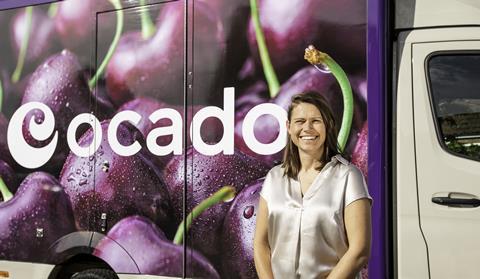
Turnaround takeaways
The main takeaways: a return to double-digit growth, a “record” Christmas and a move back into the black, will surely have unfurrowed brows at both HQs.
How did Ocado manage it? “We have focused first and foremost on being a great shopkeeper,” Gibson said, “improving our unbeatable range, great value and unrivalled experience – all underpinned by improved cost efficiencies.”
The percentage of ‘perfect orders’ – meaning on time and in full – is up by six percentage points across the year, with 99% of items delivered as promised and a 24% improvement in products not fulfilled. This has helped drive up customer retention and satisfaction.
▼ 1.6%
Average basket size, down to 43.8 items
But it’s probably the focus on range and value (and perceptions of value) that has helped improve metrics the most.
Range has always been Ocado’s USP – as an online pureplayer it can stock a greater variety of SKUs than supermarkets with finite shelf space. The growing selection of M&S products is doing much of the legwork behind Ocado’s gains – with 90% of the M&S range now on the website, up from 72% in June 2023.
Ocado’s own-label range – which has been “built out” with both essentials and “new and unique” products, has also been crucial given the market-wide consumer switch that saw private label’s share of UK unit sales grow 1.2% in 2023 on 2022, and branded unit sales decline by 5.4% [NIQ].
▲ 4.8%
Total volumes up to 232.2m items
Price cuts
Prices have also been cut, in five rounds since June, taking the number of products reduced to more than 3,000. These cuts – as well as Ocado’s Tesco-matching ‘Price Promise’, revived in March, covering 10,000 products and newly including Clubcard deals – have been heavily marketed.
As a result, Ocado has been “broadening reach” says Peel Hunt’s James Lockyer. “Ocado.com is more attractive to more people,” he says. “It already sees switching from a wide array of supermarkets, not just those perceived as comparable to Ocado or M&S.”
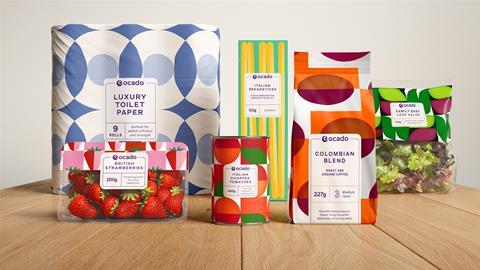
And Ocado Retail is “not showing signs of easing off the value pedal” says Shore Capital’s Clive Black.
Average selling price was up 5.4%, “considerably lower than market inflation”, Gibson said.
▲ 3.8%
Average basket value now at £121
More customers mean the overall operation is more efficient. The use of Ocado’s capacity is up from 60% this time last year to 75%, and the opening of its new Luton CFC and closure of its first CFC in Hatfield means better use of fixed costs.
But despite the improvement, investors are hardly bowled over. Though Ocado Retail is just one part of Ocado, shares in the group are down 24% in the past month, and over 40% since the summer.
“They are not a market disruptor, they are not an industry leader. If they were then after 24 years they would not still have such a small market share,” says Ged Futter, director of The Retail Mind.
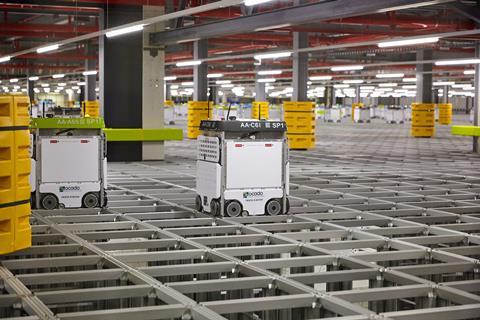
Share ambitions
Ocado’s market share clicked up a few decimal places through the pandemic but has plateaued stubbornly at around 1.7%, according to Kantar. NIQ puts present share at 1.5%.
“We want to be a bigger part of the grocery market,” Gibson said. She focused on the more flattering figure of Ocado Retail’s share of online grocery (where the discounters as yet have no presence), which is at 12.7% and inching up. Her calculation is that online’s share of overall grocery sales will grow, and Ocado’s disproportionate slice will put it at an advantage.
▲ 5.4%
Average per unit selling price now £2.75 and ‘lower than market inflation’
“What we’re starting to see now…is online is starting to outpace the growth of offline again,” she said. “So… we would expect that continued growth in taking share of online will actually take share of overall market as well.”
The growth of online grocery is probably inevitable in the long term. But its rise won’t be in the leaps and bounds seen through the pandemic, which saw online share peak at around 15%, more than double that of pre-Covid [NIQ].
Is the future of food shopping online?
Latest NIQ figures – covering December – indeed show growth in online grocery sales was at 7.7% versus December 2022, ahead of that seen in bricks & mortar stores (up 5.5%). But the context is important. Online’s share of fmcg spend was 10.6% in the last month of the year, a small increase on the 10.4% recorded over the same period in 2022. For 2023 overall, online’s share is practically static, down 0.4 percentage points to 10.7% [NIQ]. And the value growth of online was at 3.6%, less than 2022 and the worst performing of all channels.
“Is the future of grocery retail in the UK online? The simple answer is no,” says Futter. “Multiple retailers don’t make any money from it – if they did they would be pushing it more. But even though they aren’t making money from it, it’s not costing them as much as it’s costing Ocado.”
Average basket size is also diminishing – down 1.6% to 43.8 items in the latest quarter.
▲ 10.9%
Retail revenue up to £609.4m
“A million customers is great, but are you making any money?” Futter adds.
Many more customers will be needed to have Ocado’s network running at full capacity. Ocado Retail’s statement that it is “continuing on our journey towards a high mid-single digit EBITDA margin in the mid-term” prompts Futter to question “how long will this journey take, how much will it cost?”
The latest results are a good start, but the retailer can’t get complacent. “Such revenue progress represents a welcome step up in trading momentum, set against multiple years of weak, and so favourable, comparatives,” says Black.
As Gibson put it: “There is much more to go after in online grocery.”








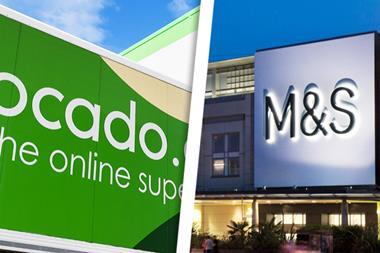


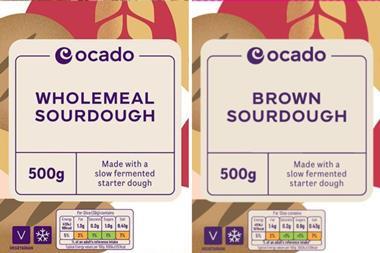







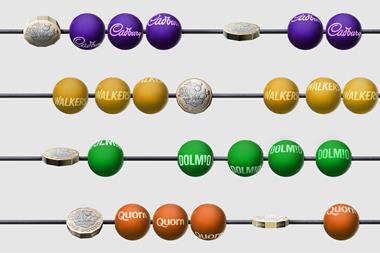
No comments yet